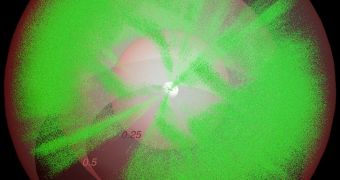For the past 12 years or so, the Sloan Digital Sky Surveys, part I, II and III, have been continuously analyzing the night sky, in an attempt to create digital 3D maps of how matter is distributed throughout. At this point, experts are trying to calculate how cosmic mass clumps up together based on these data.
At the US Department of Energy’s (DOE) Lawrence Berkeley National Laboratory (Berkeley Lab), experts are hard at work towards translating SDSS data into visual information. Once this is done, they will be able to use this information to calculate universal mass distribution.
The Lab is home to the DOE National Energy Research Scientific Computing Center (NERSC), a facility dedicated to this type of advanced data processing. If their effort succeeds, then astronomers will understand how the Universe evolved since it was half of its current age until now.
Understanding how galaxies cluster together is extremely important for studies of gravity, dark matter and dark energy. The latter two appeared exclusively because experts could not find a way of explaining the large-scale motions of matter. Gravity appeared to be incapable of such feats.
“The way galaxies cluster together over vast expanses of the sky tells us how both ordinary visible matter and underlying invisible dark matter are distributed, across space and back in time,” explains study leader and astrophysicist Shirley Ho.
She holds joint appointments, at the Berkeley Lab and at the Carnegie Mellon University (CMU). The expert explains that the new endeavor even seeks to determine the mass of neutrinos flying through the Universe, in addition to the amounts of dark matter and dark energy available.
“What’s left over is the ordinary matter and energy we’re familiar with. The distribution gives us cosmic rulers to measure how the universe has expanded,” Ho explains. Her team used data from the Baryon Oscillation Spectrographic Survey, which is included in SDSS III.
BOSS thus far analyzed 1.5 million luminous galaxies, of which 900,000 were included in the study.
“By covering such a large area of sky and working at such large distances, these measurements are able to probe the clustering of galaxies on incredibly vast scales, giving us unprecedented constraints on the expansion history, contents, and evolution of the Universe,” Martin White says.
The expert holds an appointment as a professor of physics and astronomy at the University of California at Berkeley and chair of the BOSS science survey teams. He also works at the Berkeley Lab Physics Division.

 14 DAY TRIAL //
14 DAY TRIAL //